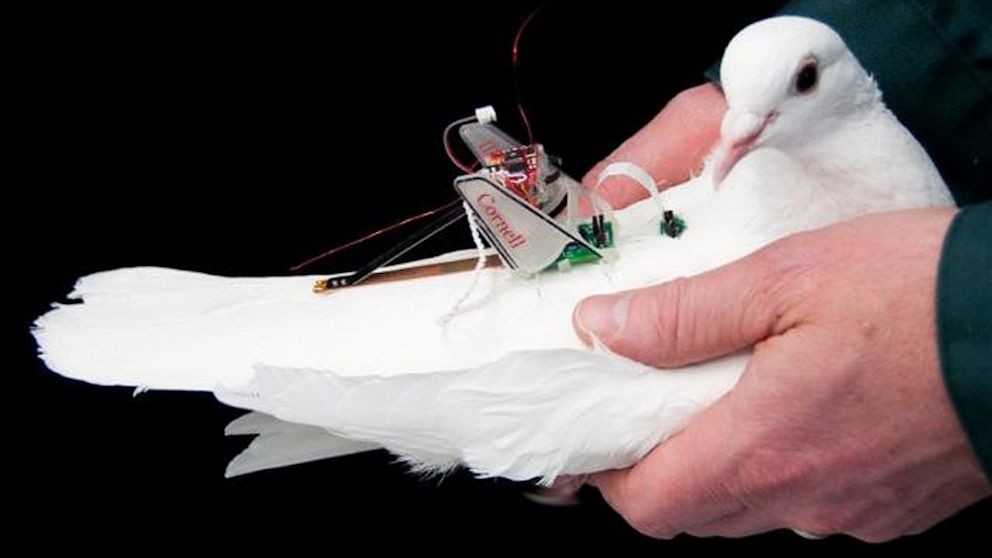Can Backpacks Save Our Birds?
Portable labs that can be strapped to even tiny birds are coming, experts say.

Aug. 4, 2013— -- So you want to know where birds go to escape the powerful winds such as those that ravaged the Atlantic seaboard during superstorm Sandy? Curious about how tiny hummingbirds fly all the way across the Gulf of Mexico every year as they return to their nesting area? Puzzled about how migrating birds will survive global climate change that could destroy their precious wetlands?
Find out by putting backpacks on some of the birds, backpacks crammed full of sensors that will record their every move and transmit all that data back to scientists who could learn a lot about flying critters that many claim are modern dinosaurs.
Is it really possible to put what amounts to a portable lab on the back of a songbird, or even an eagle? Scientists and engineers in numerous labs are betting they can do just that, and the data they expect to collect could revolutionize our thinking about our fine feathered friends.
"This is going to be hugely useful," ornithologist Andrew Farnsworth of Cornell University said in a telephone interview. "We'll see some real novel things birds are doing that we didn't think they were doing."Much of the technology is already available, and Farnsworth wants to see backpacks that can track "where the bird is over the course of its journey from wherever it originates to its destination." He wants details, and he wants them as close to real time as possible.
That's a tall order, but across the campus one of his colleagues, Michael Shafer of Cornell's Intelligent Machine Systems Laboratory, is working on a key problem that has to be resolved before Farnsworth's dreams can come true. The sensors that can collect the data, the microcontrollers that can log it and transmit it back to the lab, are already available.
But energy is the hog that could kill the bird.
"You can't put a nine-volt battery on a bird," since the battery would weigh more than a lot of birds, Shafer said. The solution, he said in a telephone interview, is to make the bird supply its own electricity.To see if that's possible, Shafer recruited a pigeon to see if he could build a backpack loaded with instruments that wouldn't cause the bird to flip over on its back and crash to the ground. He knew the package could weigh no more than 4 percent of the weight of the bird.
That was the easy part. The pigeon hardly noticed that it had a hitchhiker on its back.
So he equipped it with a piezoelectric device that can convert mechanical energy into electric energy. As the pigeon flies, its body moves conversely to the motion of the wings. When the wings go up, the body moves slightly down, and when they go down, the body moves slightly up.
That was more than enough to cause a man-made crystal to produce a current in a process first demonstrated in 1880 by the famous Curie brothers, Pierre and Jacques. The amount of acceleration, or movement, of the pigeon's body in response to the flapping wings was "kind of shocking" to Shafer and his colleagues.
What's remarkable about this is the entire device was built in the Cornell lab with "off the shelf stuff," he added, "but we made a lot of modifications to suit our needs."
He's confident that a custom made device would perform much better, and he thinks it's possible that even hummingbirds could be outfitted with backpacks, although the larger the bird, the easier the task. What hummingbirds lack in mass, however, they may make up for with the incredibly rapid movement of their wings.




